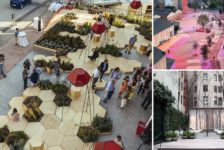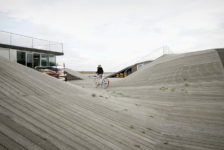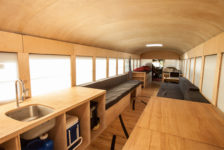Article by Valentina Ferrari
A review of art piece entitled “Generation – Circulation of Life” by Toshihiko Shibuya, a Japanese artist from Muroran.
Are you a prisoner of the daily grind, neglecting or forgetting everything that transcends your work or routine? Embracing art could help you restore balance in your daily life and aid you in focusing outside your boundaries, allowing you to see new horizons. All you need is to be open minded, have listening and sensibility skills, sincerely watch, and then accept that the message will not always be immediately understood. Be patient. The meaning of an artwork — which at your very first could be charming or mysterious or even funny — is hidden within the artist’s mind. Once you understand the artist’s thought process, the artwork will take on a deeper meaning. Clearly, having some sort of guide makes the process easier and the rise of empathy cleaner, but what it comes down to are the emotions the artwork provokes in each of us, which develop when the message arrives at the destination with a resonance effect.
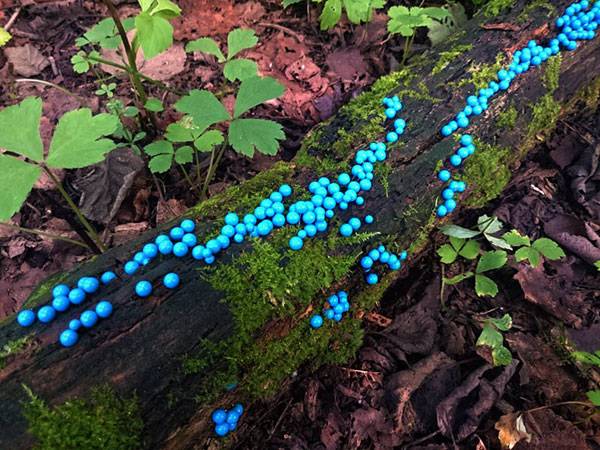
Generation – circulation of life by Toshihiko Shibuya.
“Generation – Circulation of Life” by Toshihiko Shibuya
Harukayama Art Fort
Take the artwork of Toshihiko Shibuya, a Japanese artist from Muroran who was born in 1960 and works in Sapporo. Shibuya’s work has been inserted into an outdoor contemporary art museum known as Harukayama Art Fort, at the foot of Mount Haruka in the coastal tourist zone of Hokkaido island, near the city of Sapporo. The museum sits next to a hotel built 40 years ago, which was ruined after the Great East Japan Earthquake of March 2011. In the last few years, the art show that takes place here between August and September has seen an increasing number of works (67 this year). The artists focus mainly on the relationship between art and environment.
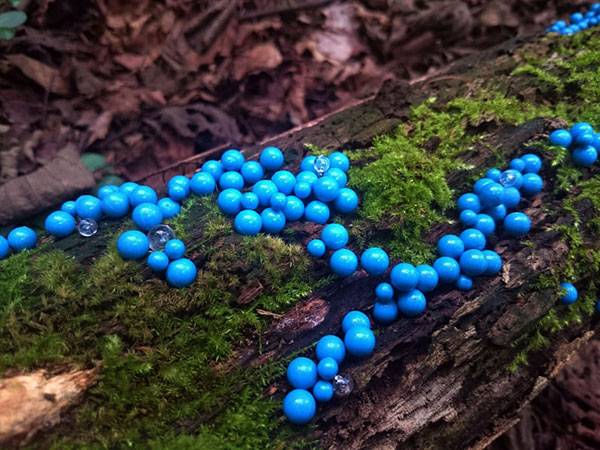
Generation – circulation of life by Toshihiko Shibuya.
A Wasteland Landscape
The landscape is a wasteland, where a neglected and abandoned woods evokes the idea of a land without maintenance. In this woodsy context — even a bit wild — the leitmotiv results in a tidy theme, constant in shape and rhythm, reminiscent of the cycle of life.
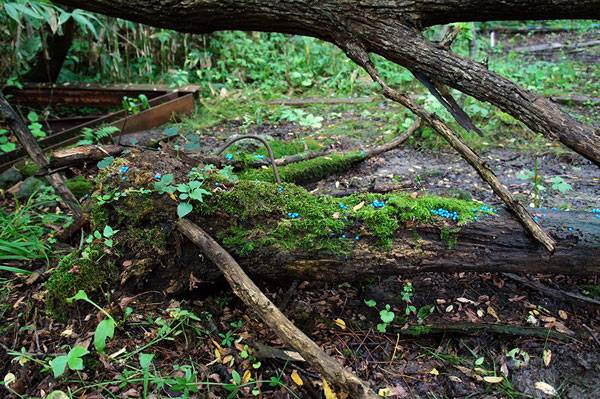
Generation – circulation of life by Toshihiko Shibuya.
After the terrible earthquake of 2011, Shibuya said he lost his ability to create. But paradoxically, what permitted him to revive the creative process was working in that same damaged landscape, which gave him a chance to express what he felt and elaborate on it. “The rundown hotel and the fallen trees gave me a drive to express regeneration, symbiosis, coexistence of nature and human beings,” he said.
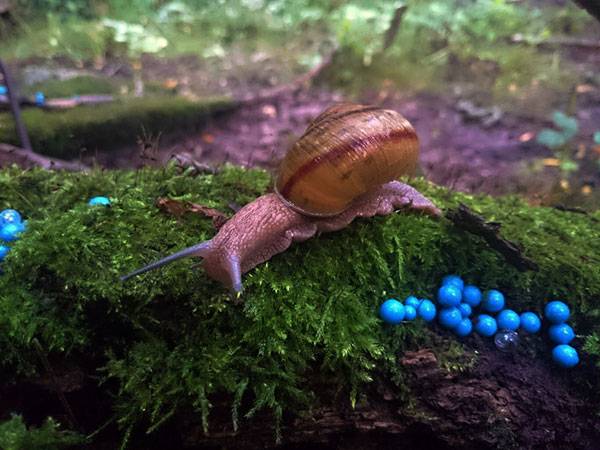
Generation – circulation of life by Toshihiko Shibuya.
From Mushrooms to the Cycle of Life
Shibuya created his “White mushrooms breeding project” in 2011, followed by “Generation 1 – circulation of life” in 2013 and “Generation 2” in 2015. All of them have the same theme, with similar material, but with a few differences: In the 2011 work, there are bright pink pins settled on the trunks of fallen trees. On the bark, the passage of time has left its mark with the growth of mosses; the artist added his own touch — families of pins resembling stylized mushrooms.
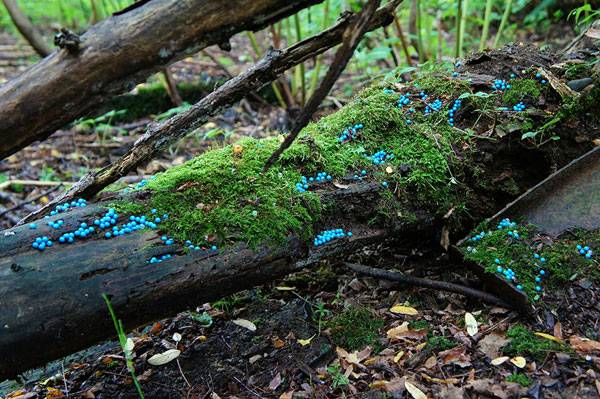
Generation – circulation of life by Toshihiko Shibuya.
In 2013, on the same trees, he added ethereal, little pin spheres following a scheme, seeming to represent the translucent eggs of some mystery animal, maybe frogspawn. The spheres are transparent, and the lower part was coated with a luminous paint, communicating a kind of fantastic scenery reflected in the moonlight or by flashlight. Then in 2015, Shibuya installed 3,500 blue pushpins on the same trees, evoking the image of spawning life.
The Symbology
It’s a fairy-tale context with a clear symbology. Year after year, the temporary installation renews itself and assumes new connotations, developing a theme or narrating the evolution of life itself throughout the mutation of the pushpins. In this way, the pins that had plate and stylized pink hats have assumed rounded and transparent shapes, with the newer blue pins arriving in a sort of continuous evolution, much like the cycle of life. I wonder how it will look in a few more years.
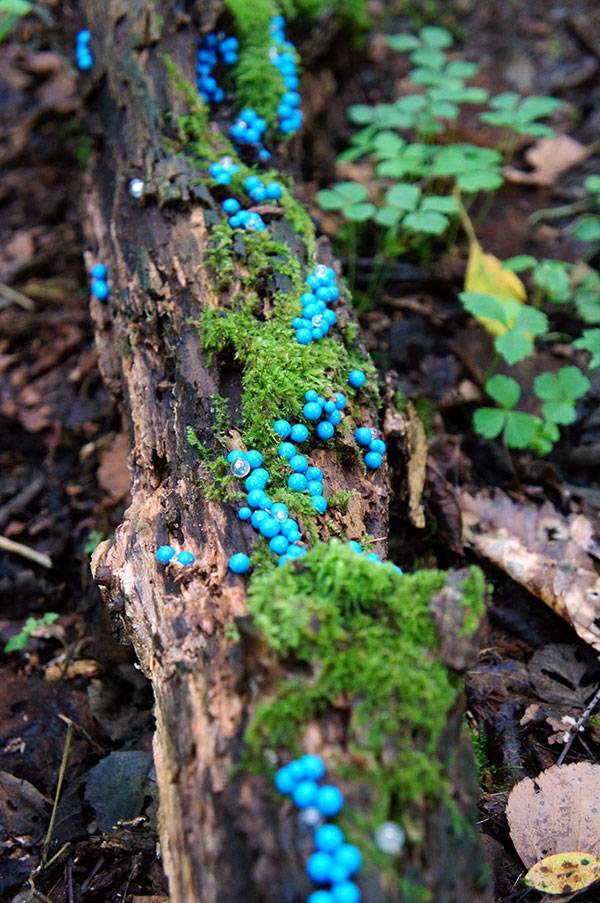
Generation – circulation of life by Toshihiko Shibuya.
As the artist says, “The law of ‘natural cycles’ has begun to be lost little by little. I will question again how my artwork performs as media to re-encounter the environment surrounding me and my life, rather than just placing the artwork to face nature.”
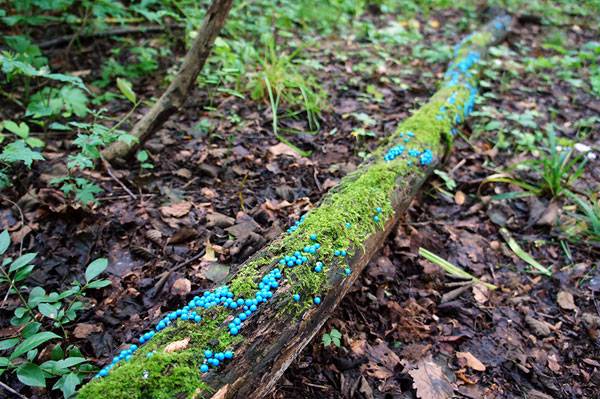
Generation – circulation of life by Toshihiko Shibuya.
The Inner Cycle
Nature itself is bound to a continuous cycle of life and death; there is no life without death, and vice versa. The metaphor is clear: As natural forces push the regeneration process and create new life from decomposition, so does the artist send a message of rebirth, both physical and spiritual. Everything that happens in our lives – from the monumental to the seemingly inconsequential – leaves its mark and becomes the substratum for the growth of something else.
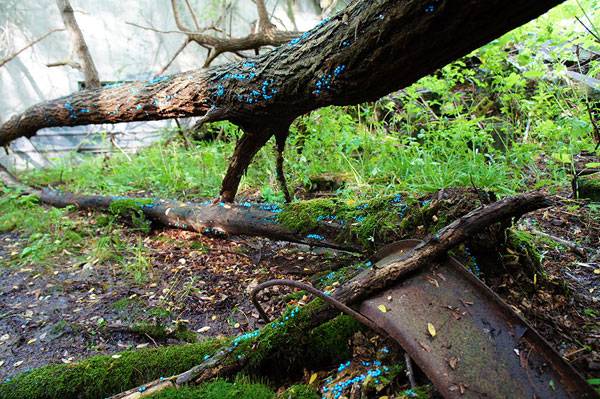
Generation – circulation of life by Toshihiko Shibuya.
We cannot know what the future holds. But one thing is certain – change will come. With an often imperceptible slowness, life starts to flow again, reaching its maximum peak, whether it’s the wood’s climax, the evolution of big civilizations, or an individual’s realization.

Generation – circulation of life by Toshihiko Shibuya.
Let it Flow: It’s Not a Challenge
Personally, I love the circulating life, death, and rebirth concept. It has its own meaning, both in the strict sense and broadly speaking: It is a fascinating idea, that all the obstacles could be demolished and we could start again, even if it seems like a fairy tale. The good news is that it is not a fairy tale; it will simply happen. Something will happen — let it flow as the artist does in this artwork. But even if you can’t force the process, and you have to face your monsters, don’t be blind. You have to be patient — For a while, you will be like those mushrooms, grown over the ruin of fallen trees. Remember that life goes on, in its own continuous cycle. What did you think of this art feature? Let us know in the comments below! Go to comments
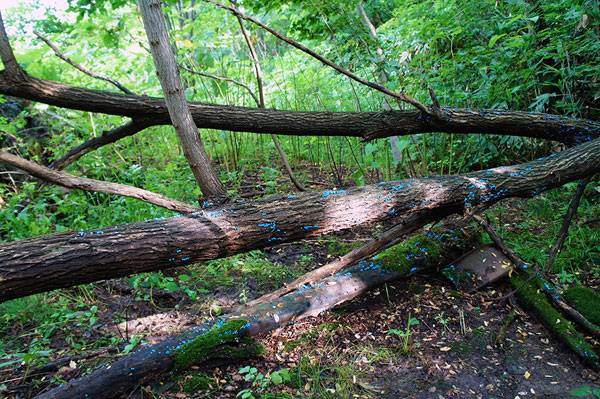
Generation – circulation of life by Toshihiko Shibuya.
Recommended Reading on Phytoremediation:
- Phytoremediation: Transformation and Control of Contaminants by Steven C. McCutcheon
- Phytoremediation: Role of Aquatic Plants in Environmental Clean-Up by Bhupinder Dhir
Article by Valentina Ferrari
Published in Blog




